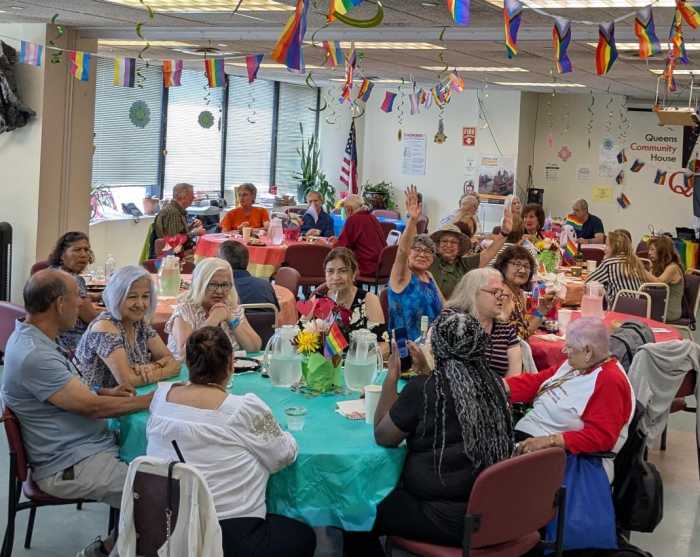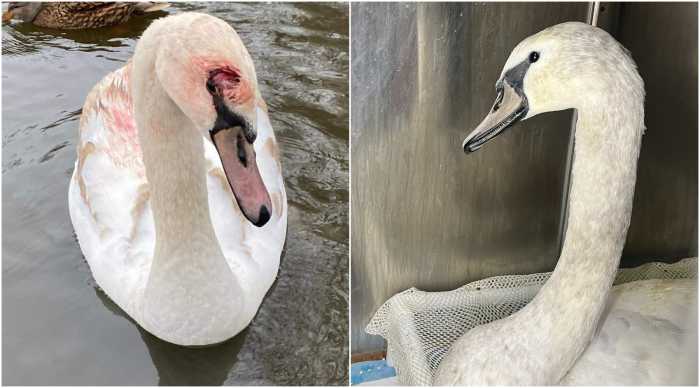Will Lee (Daniel Craig), the protagonist of gay director Luca Guadagnino’s “Queer,” loses control of himself in several ways: taking heroin and ayahuasca, connecting with another man romantically and sexually, coping with the mental aftermath of killing someone. The three can’t be easily separated. Under the influence of alcohol and heroin, Lee hallucinates his fantasy life. In the middle of conversation with a friend, he suddenly zones out and re-directs his attention to a TV screen showing static. The love story is the section of “Queer” Guadagnino really commits to, but the film’s trippier scenes are its silliest. “Queer” is too clean and controlled for its own good. Lee’s descent into drug use runs counter to Guadagnino’s academic impulses. All the film’s dirt is obviously cosmetic.
Based on a novel by gay author William S. Burroughs, “Queer” calls for some background for spectators who are unfamiliar with his life and work. Written in the early 1950s but unpublished till 1985, “Queer” cast Burroughs’ own experiences upon his alter ego Will Lee. While living in Mexico City, he killed his wife Joan Vollmer in a bizarre incident, suddenly asking her to put a shot glass on her head so he could play a “William Tell game.” Aiming for the glass, he instead shot her. “Queer” stages this scene twice, both times departing from how it played out in reality.
Set in Mexico City during the ‘50s, the first section of “Queer” shows Will Lee aimlessly haunting its gay bars. He lives in a community of gay expats, one played by Jason Schwartzmann as a bear with greasy hair and a thick beard. When he meets Eugene (Drew Starkey), on a street where the two men are watching a cockfight, they start spending time together. Drinking with each other, they develop a more serious bond, although the rather innocent Eugene is nervous about exploring his sexuality. Living off a trust fund allows Will the freedom to behave like a bohemian, but the artistic drive his creator would show has not yet developed. (In his introduction to “Queer,” Burroughs wrote that killing Vollmer spurred him to become a writer.) In the second section, Will suffers the pangs of heroin withdrawal while traveling with Eugene. Obsessed with the KGB and CIA’s reputed use of ayahuasca to create an army of telepathic slaves, he heads deeper into South America in search of the drug.
Guadgnino transforms “Queer” into a love story, but it remains an unusual one. Burroughs’ image was defined by transgression: He was quite publicly addicted to heroin for most of his life, as well as openly gay at a time when almost no one was. This isn’t exactly tamed, but the film tones down his machismo, even though Will carries a gun everywhere he goes and scorns effeminate queer men. The first Guadagnino film released this year, “Challengers,” treated queer desire as a bond that was impossible for its characters to consummate. “Queer” embraces sex as a means to connection while sharing a pessimism about lasting love. Lee and Eugene’s relationship remains frustrating because the younger man never fully returns the emotions Lee wants him to. Still, the film emphasizes tender foreplay as much as sexual pleasure, with Lee turning to Eugene’s body for relief during heroin withdrawal. Indeed, the desire for a deeper connection lurks behind Lee’s quest for ayahuasca. He wants to experience its paranormal effects for himself, so that he can experience a different relationship with Eugene. When he and Eugene finally do take it, he hallucinates, their bodies becoming one.
Burroughs’ writing reveled in the abjection created by the need for sex and drugs, with a wickedly dark sense of humor. His novel is far more fragmentary and elliptical than Guadagnino’s film, whose final section radically departs from it. As an exercise in psychedelic cinema, “Queer” also lifts from Gaspar Noe’s “Enter the Void” and the last 20 minutes of Stanley Kubrick’s “2001: A Space Odyssey.” In this department, it’s a failure. While I don’t have any personal experience with such drugs, I doubt tripping on ayahuasca leads to hallucinations that look like blatant CGI. The animated viper who approaches Lee and Eugene during the film’s third section sums up the lack of danger here. The obvious artifice and deep, saturated colors of its Mexico City are far more creative. If Lee sees the world as a projection of his thoughts, nodding in and out of consensus reality, the style of “Queer” is self-conscious about its existence as a representation of them.
Guadagnino hit rock bottom with his dreadfully self-congratulatory remake of Dario Argento’s “Suspiria.” Since then, his work has improved greatly. Even so, his attraction towards chaos and need to contain it have remained constant. “Queer” raises mixed feelings in provocative ways, but its best moments come in its first two sections. When it lets go of the comfort of a straightforward story, the film can’t find anything as meaningful with which to replace it.
“Queer” | Directed by Luca Guadagnino | A24



































